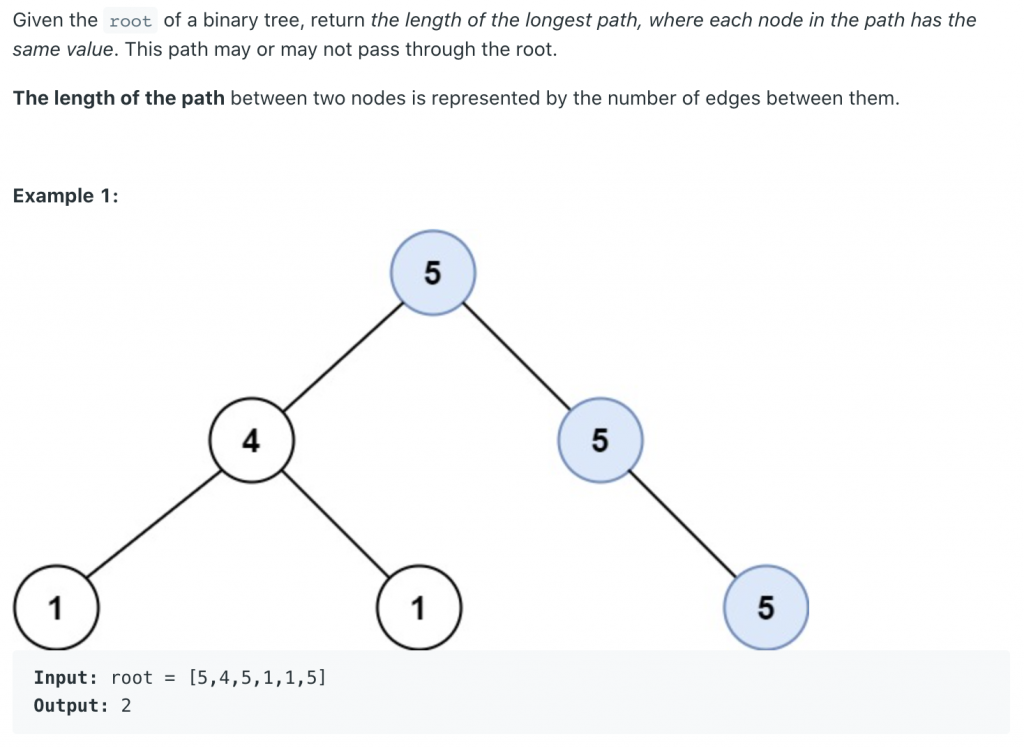Description


Submission
/**
* Definition for a binary tree node.
* struct TreeNode {
* int val;
* TreeNode *left;
* TreeNode *right;
* TreeNode() : val(0), left(nullptr), right(nullptr) {}
* TreeNode(int x) : val(x), left(nullptr), right(nullptr) {}
* TreeNode(int x, TreeNode *left, TreeNode *right) : val(x), left(left), right(right) {}
* };
*/
class Solution {
int longestUnivaluePathMax(TreeNode* root, int val) {
if(!root || root->val != val) return 0;
return max(longestUnivaluePathMax(root->left, val), longestUnivaluePathMax(root->right, val)) + 1;
}
int longestUnivaluePathUtil(TreeNode* root, int val) {
if(!root) return 0;
if(root->val != val) return 0;
return longestUnivaluePathMax(root->right, val) + longestUnivaluePathMax(root->left, val);
}
public:
int longestUnivaluePath(TreeNode* root) {
if(!root) return 0;
int ret = max(longestUnivaluePathUtil(root, root->val), longestUnivaluePath(root->left));
return max(ret, longestUnivaluePath(root->right));
}
};



